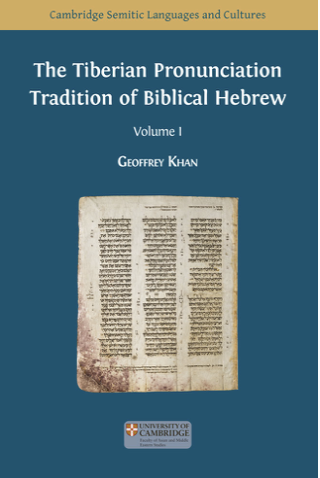| Cambridge: Cambridge: University of Cambridge & Open Book Publishers (2020) |
The form of Biblical Hebrew that is presented in printed editions, with vocalization and accent signs, has its origin in medieval manuscripts of the Bible. The vocalization and accent signs are notation systems that were created in Tiberias in the early Islamic period by scholars known as the Tiberian Masoretes, but the oral tradition they represent has roots in antiquity. The grammatical textbooks and reference grammars of Biblical Hebrew in use today are heirs to centuries of tradition of grammatical works on Biblical Hebrew in Europe. The paradox is that this European tradition of Biblical Hebrew grammar did not have direct access to the way the Tiberian Masoretes were pronouncing Biblical Hebrew.
In the last few decades, research of manuscript sources from the medieval Middle East has made it possible to reconstruct with considerable accuracy the pronunciation of the Tiberian Masoretes, which has come to be known as the ‘Tiberian pronunciation tradition’. This book presents the current state of knowledge of the Tiberian pronunciation tradition of Biblical Hebrew and a full edition of one of the key medieval sources, Hidāyat al-Qāriʾ ‘The Guide for the Reader’, by ʾAbū al-Faraj Hārūn.

